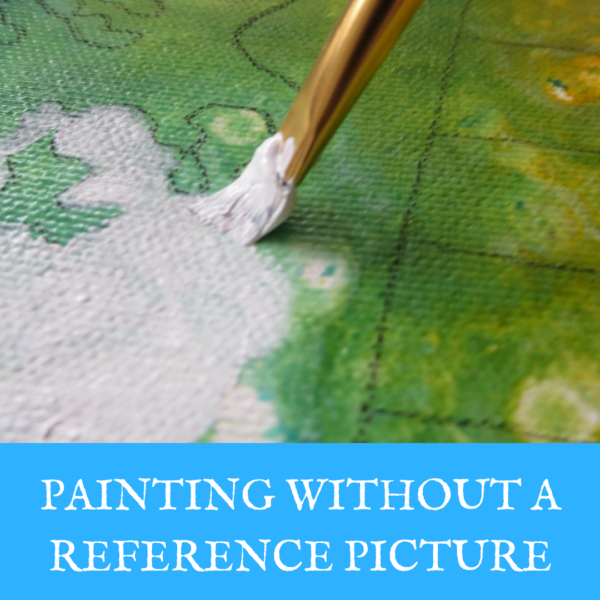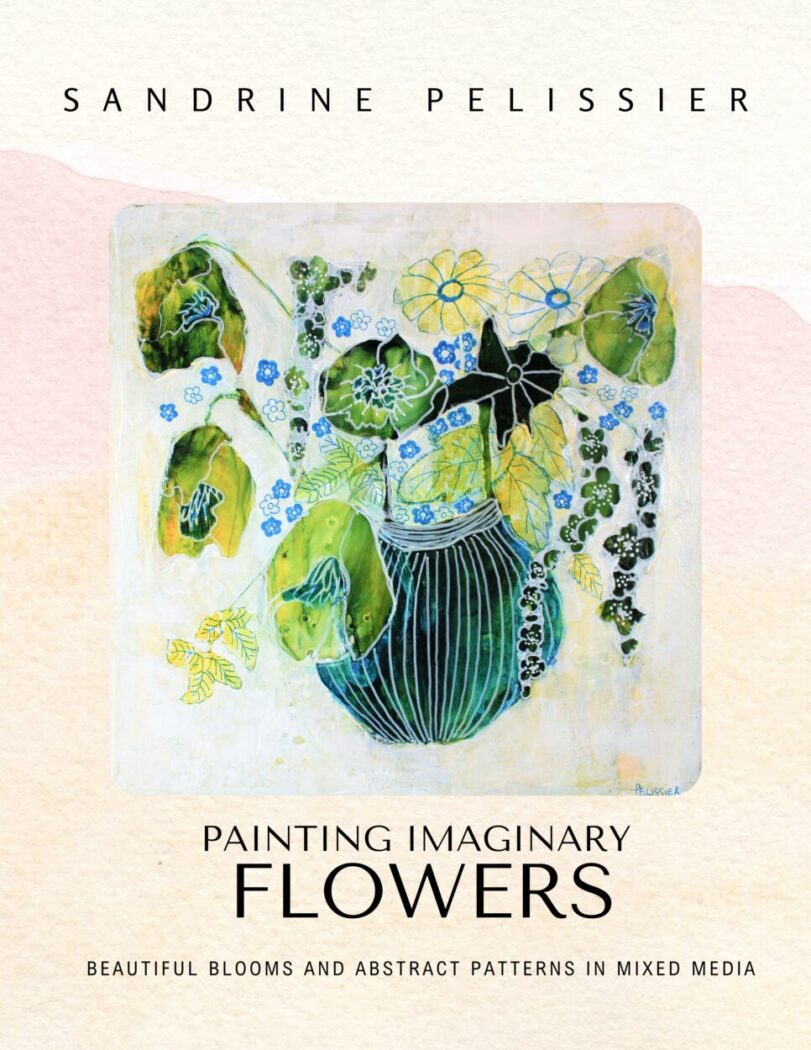How to paint Flowers from imagination : Feeling Good
August 12, 2014 2022-02-22 10:41How to paint Flowers from imagination : Feeling Good

How to paint Flowers from imagination : Feeling Good
Feeling Good
Mixed media on canvas
24 x 24 inches
Sometimes as an artist you want to express yourself and find a more personal style, but this is more difficult to do if you try to stay too close from a reference picture. Here is a technique that will allow you to paint a still life from your imagination and free yourself from reference pictures.
Here is how you can paint a still life from imagination, without a reference picture
You will need:
- Canvas, I used 3 24 x 24 inches pre-streched canvas
- Acrylic medium, I used Golden OPEN Acrylic Medium – Gloss
- Fluid Acrylics, I used Liquitex Ink in yellow and blue
- White acrylic paint, I used Pebeo in titanium white
- Payne’s grey Acrylic paint, I used Pebeo
- A graphite pencil
- Red Sakura Micron marker
- White Oil Sharpie marker
- Watercolor paint, I used Yarka watercolors.

You have many ways of painting an abstract background, in this case I did spread a few drops of liquid acrylic on top of gel medium and did spray the canvas with a bit a water.
Let your background dry thoroughly before going to the next step.

If you want a more complex background or if you want to introduce another color, you can always add another layer on top of the fluid acrylic, either with fluid acrylic, or with watercolor or another medium.
I am a Blick Art Materials affiliate and I receive a small compensation for sales. That does not effect in any way the cost of the purchaser’s order but it helps me keeping the content of this blog free.

Golden High Flow Acrylics
Incredibly flexible, Golden High Flow Acrylics have an ink-like consistency that lends itself to a wide range of techniques painting, drawing, staining, glazing, inking, hand-lettering, airbrushing, and more. – High Flow Colors, Set of 10

Look at the abstract patterns, our brain doesn’t like non sense( difficult to believe I know…) so it always try to make sense of abstract patterns, if you look long enough at the painting you will start to see designs and shapes emerging. Another way to do it is to choose a theme, like flowers, underwater scene, people, still life, faces and then try to see them on the painting. Once you start to see shapes, outline them with a pencil.

Choose an acrylic color, I personally like white, and paint around everything except the outlined shapes.

If you want to, you can paint over some areas with another color, here Payne’s grey for the vase.

An Oil sharpie marker works well to add lighter designs on a darker background.
I am a Blick Art Materials affiliate and I receive a small compensation for sales. That does not effect in any way the cost of the purchaser’s order but it helps me keeping the content of this blog free.

 |
Sharpie Oil-Based Paint Markers, White, Medium PointSharpie Oil-Based Paint Markers are great for touching up wood and metal, personalizing belongings, or adding pizzazz to school projects. Decorate and add accents to a variety of items, even non-porous materials such as glassware and terracotta. |

You can also use archival acid free markers to add designs around the shapes you isolated.

You can also make new designs on the white background.
I am a Blick Art Materials affiliate and I receive a small compensation for sales. That does not effect in any way the cost of the purchaser’s order but it helps me keeping the content of this blog free.

 |
Sakura Pigma Micron PenPigma Micron pens are acid-free and archival, making them ideal for any application requiring precision and permanance. Pigma ink is derived from a single pigment to ensure color consistency, and is fadeproof against sunlight or UV light. – Set of 6, Black |

If the marker you are using are water-resistant, you can also paint over them with watercolors

You can add any kind of designs, including zentangle inspired designs.
Feeling Good,
mixed media on canvas.
24 x 24 inches




















Comments (4)
Anne
I just love your paintings! They are so happy and full of life! Thank you.
Sandrine Pelissier
Thanks again Anne 🙂
AdrianK
I really like the tutorials you are posting lately. I’ve been doing some negative space painting also and love using white! I’m interested in why you use watercolor over the acrylic paint. Since you seem to water down your acrylics and inks, wouldn’t a more permanent solution be to use acrylic? I guess I’m thinking in terms of the final finish. I don’t really like using spray varnish, although I will if I have mixed oil pastel over acrylic. I really like using an isolation coat before the final varnish, so I’m afraid of the watercolor moving under my brush. I know it is all a matter of personal choice, but do you use watercolor because it is so transparent??? Just wondering. Your work is just wonderful and inspiring. Keep going!!!
Sandrine Pelissier
Thanks Adrian,
I could use acrylic whenever I am using watercolor on this painting but sometimes I like to work with watercolor because it will allow me to change my mind easily if I don’t like the result.
You can also spray workable fixative in between layer and that will fix watercolor making it very similar to acrylic.